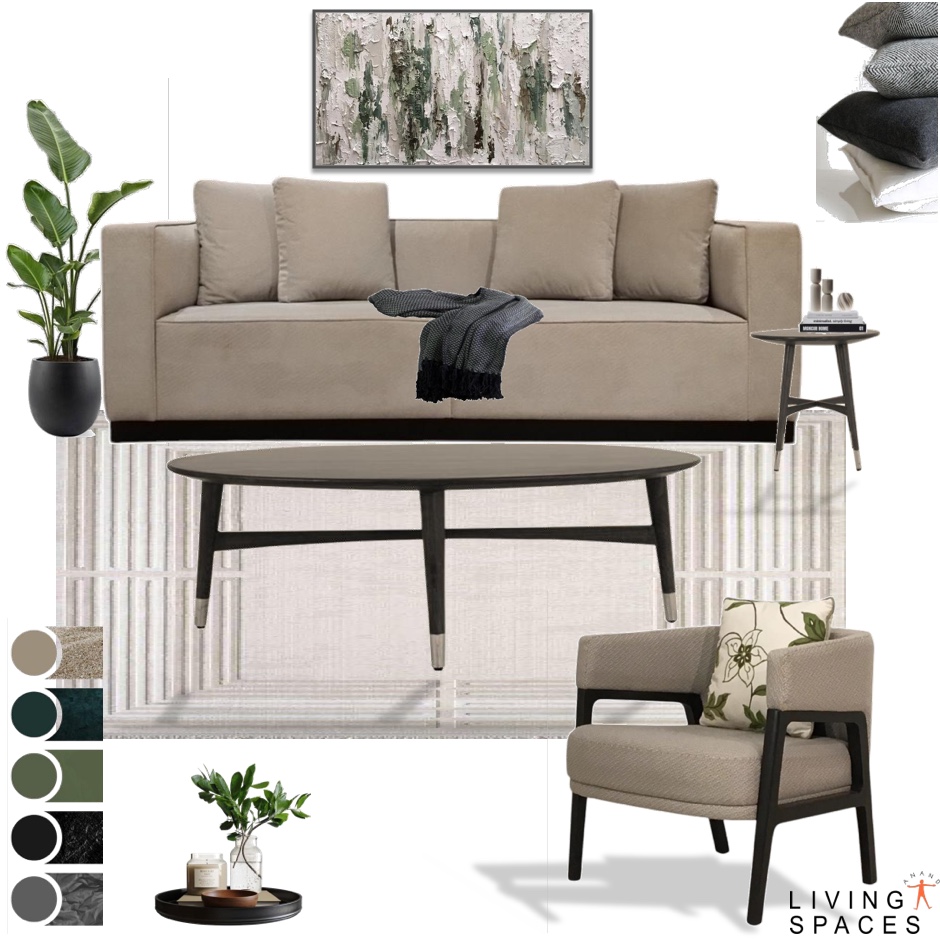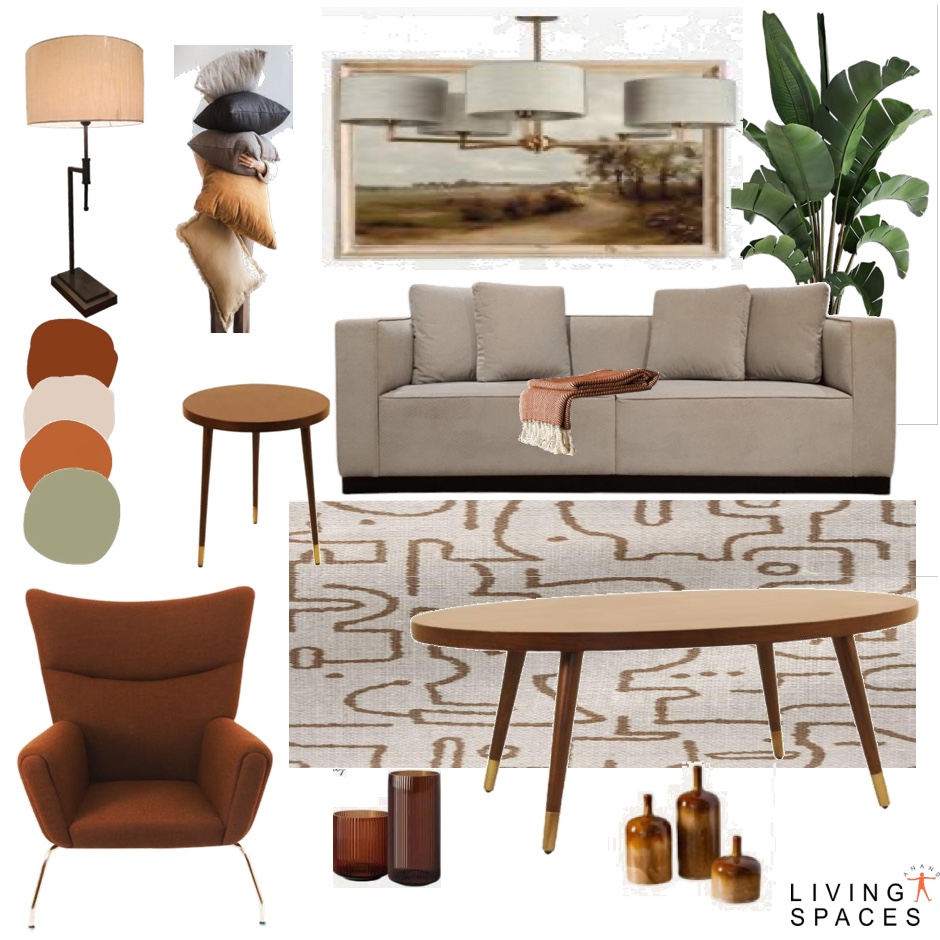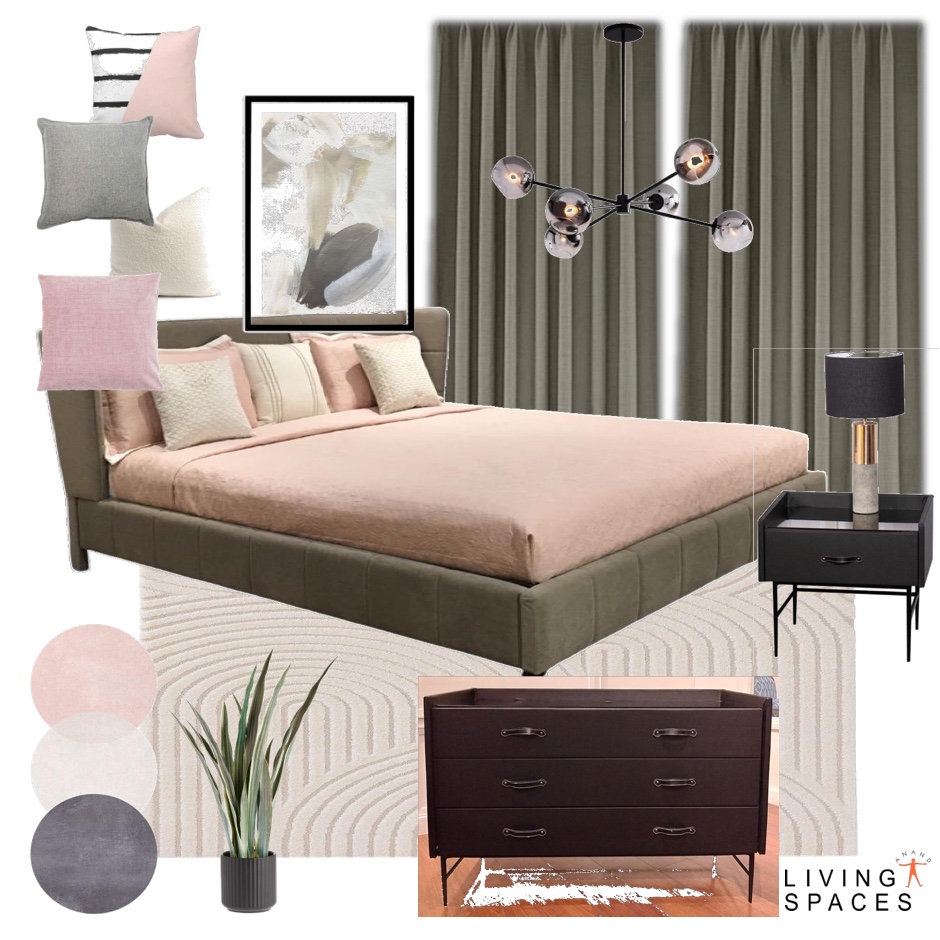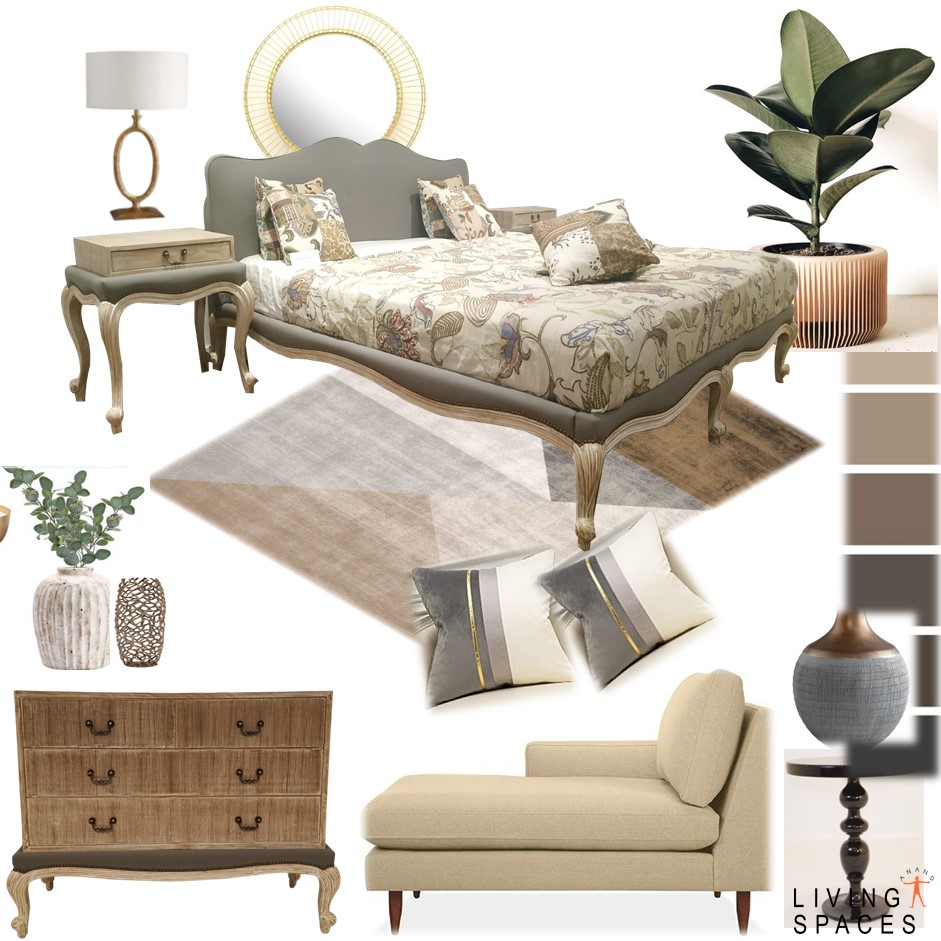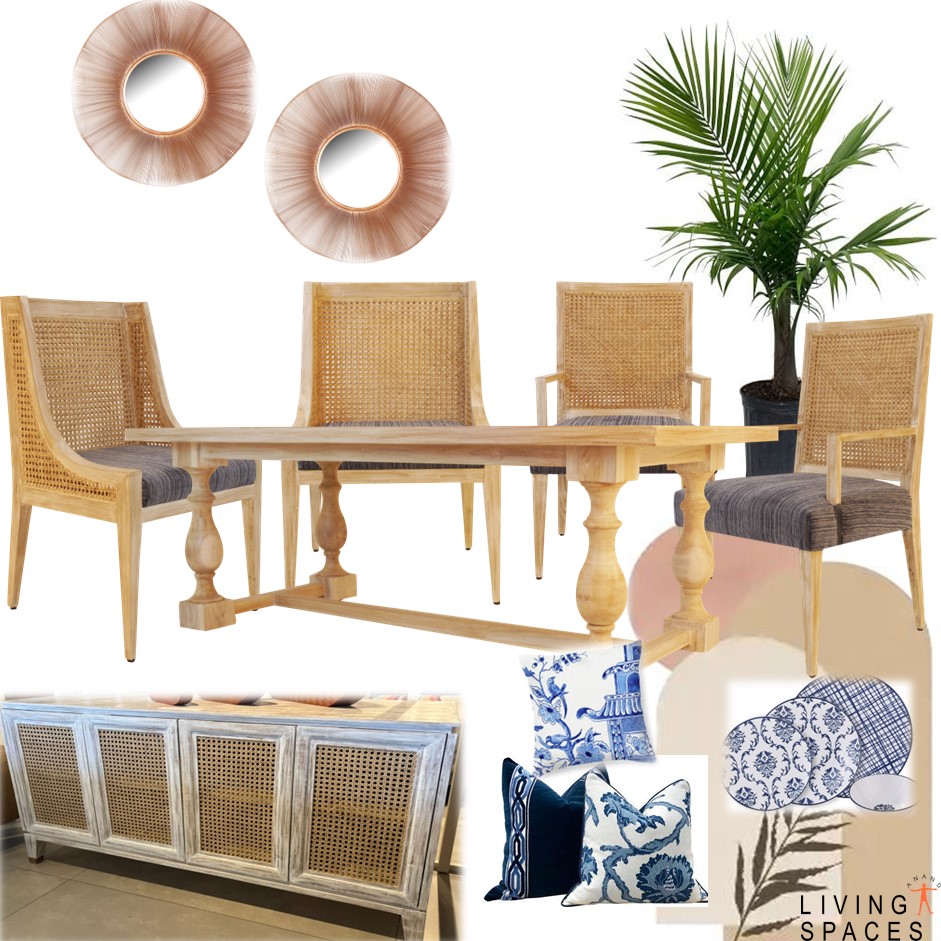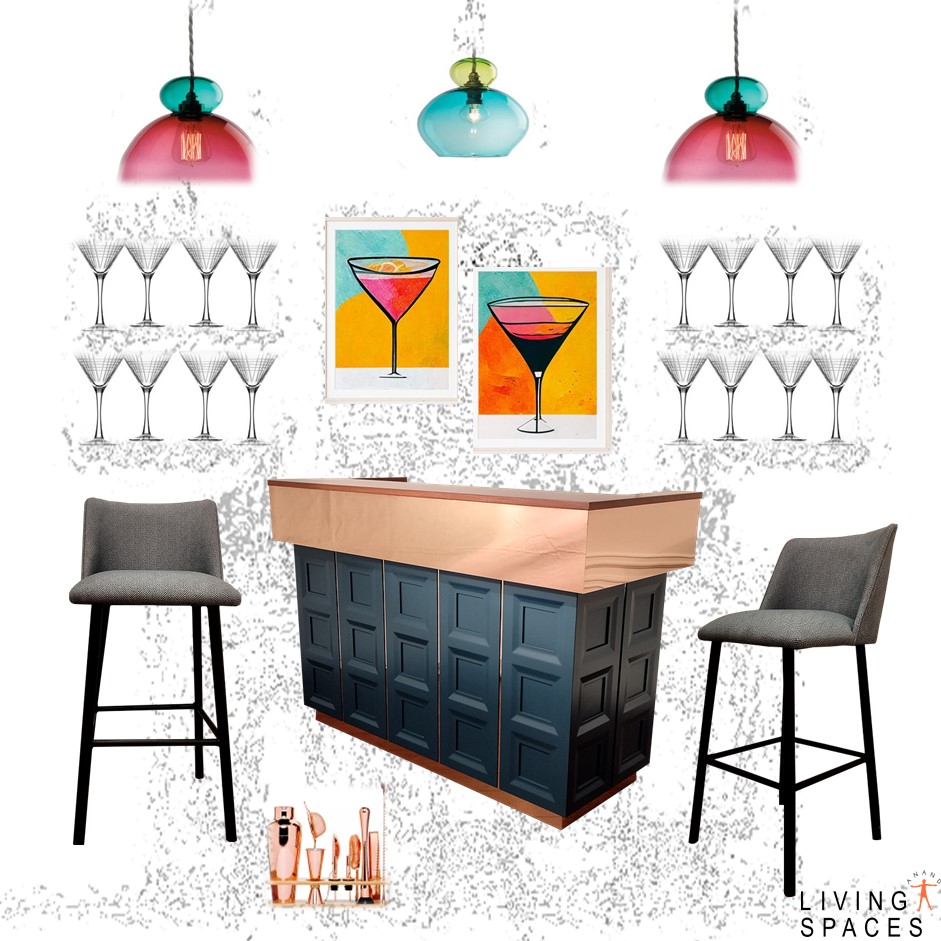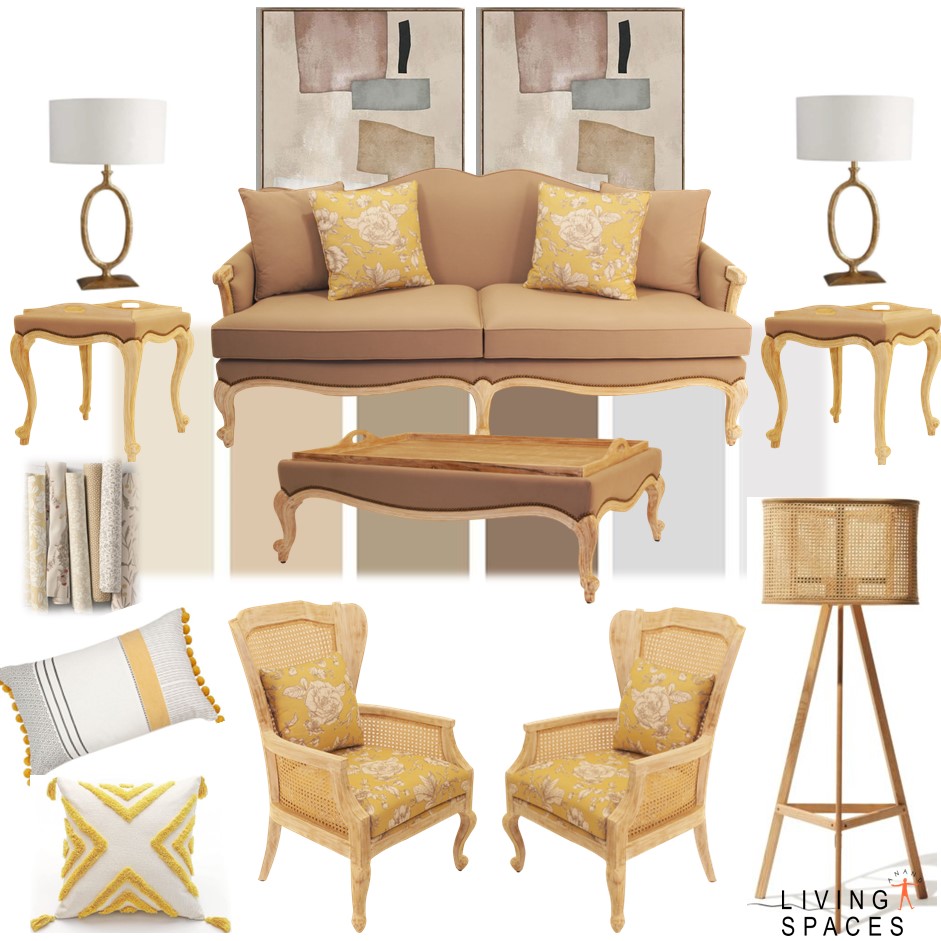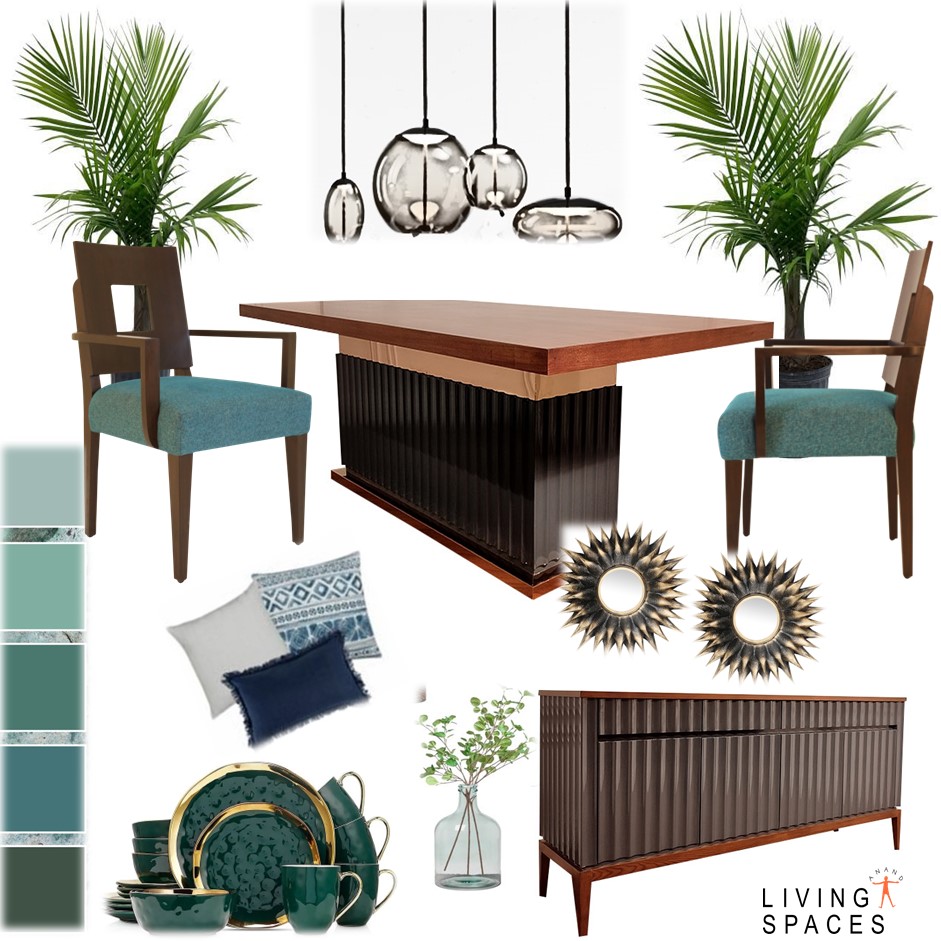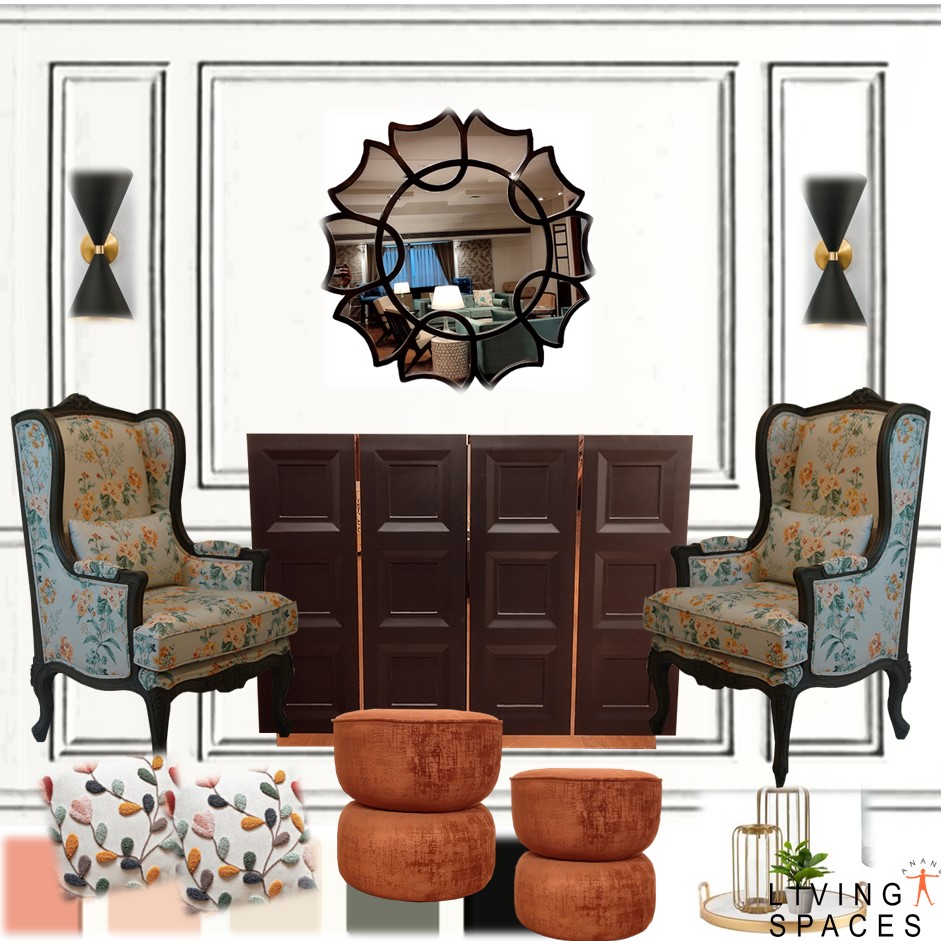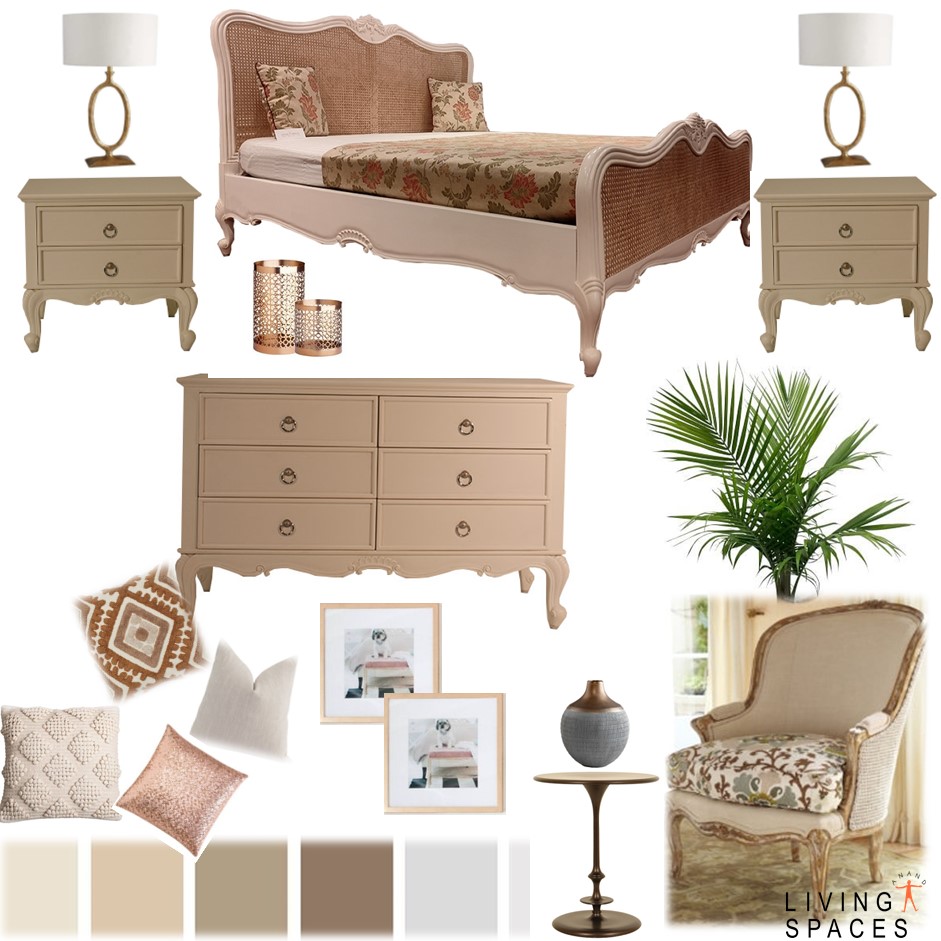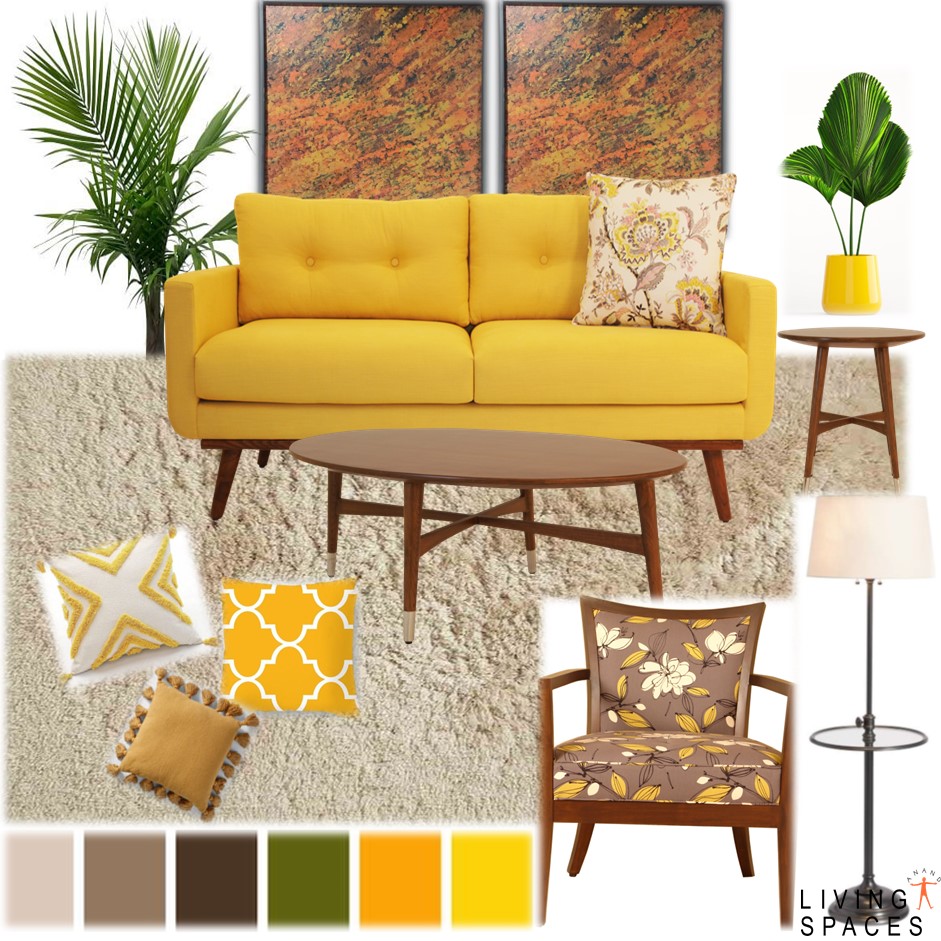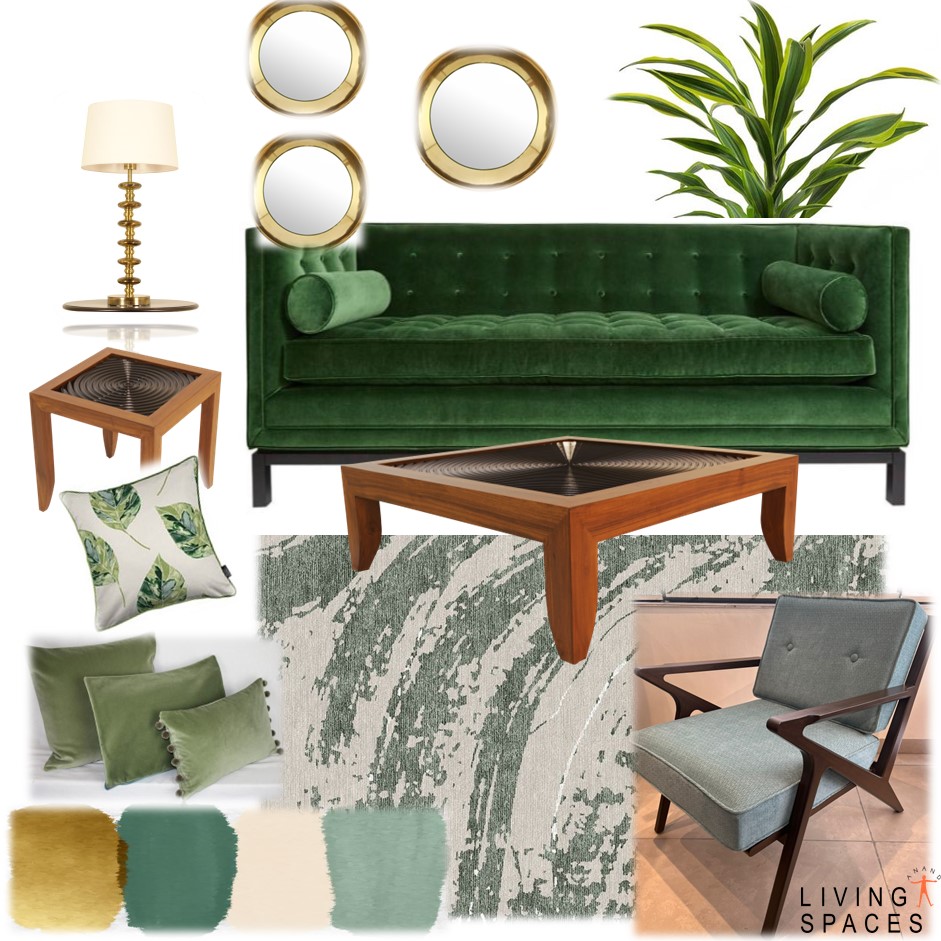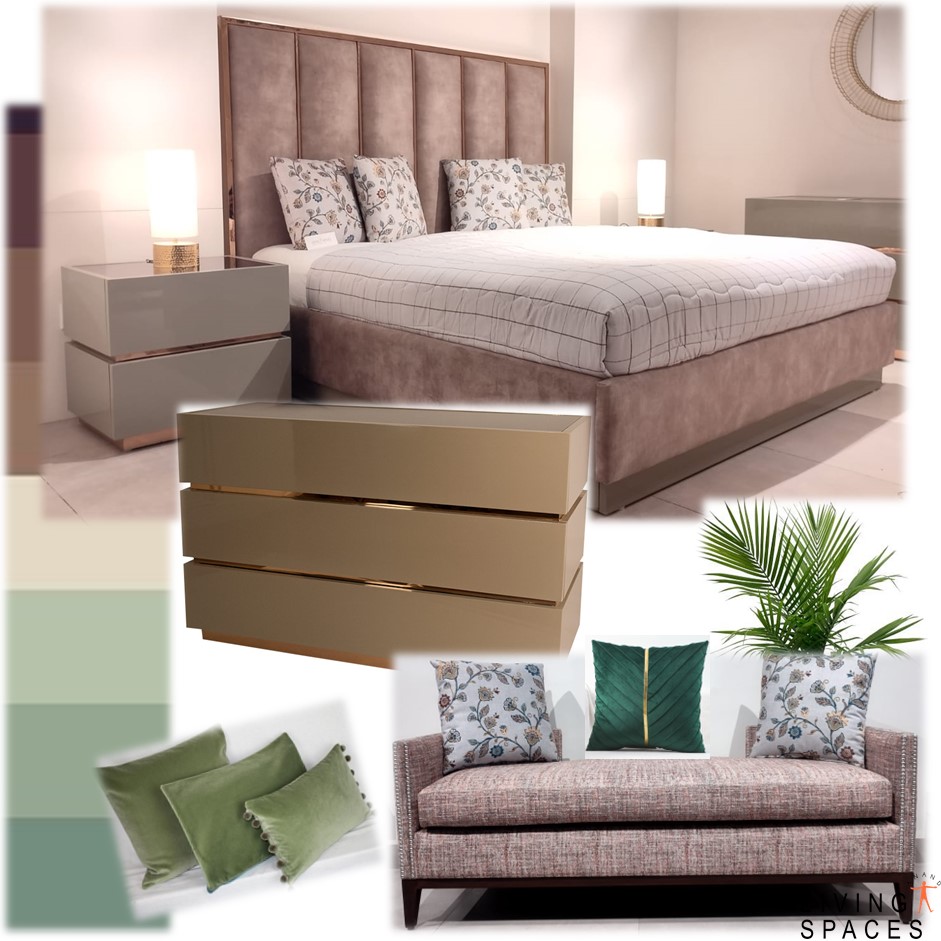Mood Boards
Mood boards are visual compositions that bring together ideas, inspirations, and potential items for a project, particularly in interior design and space planning. At Living Spaces, a prominent feature is their collection of Mood Boards which is designed to inspire and guide homeowners and designers in creating visually cohesive and aesthetically pleasing interiors. These mood boards showcase various styles and themes, like the wooden mood board, which provides a visual representation of how wood can be integrated into different spaces for a warm and inviting atmosphere. Each mood board is thoughtfully curated with images and elements that evoke specific emotions and styles, making it easier for users to envision their ideal space. This resource is perfect for anyone looking to refine their interior design ideas or seeking inspiration for new projects. The use of mood boards helps ensure that every design choice contributes to a harmonious and appealing overall environment.
Benefits of using a Mood Board in interior design with the help of Living spaces
Visualization: A mood board allows both designers and clients to visualize the end result of a design project. By arranging elements like colours, textures, and furniture items on a mood board, all parties get a tangible sense of the aesthetic and feel of the space.
Coordination: Using a mood board helps in coordinating different design elements to ensure they harmonize well. This is crucial in interior design where elements such as fabrics, furniture, and wall coverings need to complement each other.
Flexibility: Mood boards offer flexibility to experiment with different styles and themes before finalizing one. This can be especially useful in avoiding costly mistakes in purchasing or installation.
Clarification of Design Vision: Mood boards help articulate a clear and detailed visual concept before beginning any physical work. This process minimizes misunderstandings and misalignments in design expectations.
Enhanced Creativity: Mood boards can be a source of inspiration and spark creativity. By collating different elements into one view, mood boards encourage creative exploration, allowing for the mixing and matching of styles and themes to find the perfect design solution. Exploring different themes and materials on a mood board can lead to innovative design solutions and creative ideas that might not have been considered otherwise.
Efficient Communication Tool: They serve as an effective communication bridge between designers, clients, and other stakeholders, ensuring everyone is on the same page regarding the design direction. It helps in clearly conveying ideas and expectations, thus minimizing misunderstandings and ensuring that client preferences are accurately reflected.
Streamlined Decision-Making: By providing a clear direction early in the design process, mood boards can make the entire process more efficient. Decisions can be made quicker when all components are visually represented in one place, which helps in faster and more confident decisions about materials, colours, and layouts
Budget Management: By visualizing the result early on, mood boards can help in budget planning, ensuring that the design stays within financial constraints by avoiding costly design alterations later.
Trend Incorporation: They allow designers to seamlessly integrate the latest trends into their designs, making it easier to stay updated with current aesthetics and ensuring that designs feel modern and relevant.
Facilitation of Emotional Connection: Mood boards can evoke the emotional response a design aims to elicit, making it easier for clients to connect with and feel excited about the proposed concepts.
Types of mood boards available on Living Spaces
Cara Bed Mood Board:
Designed to evoke tranquillity, this cara bed mood board focuses on elements that create a peaceful and inviting bedroom environment, such as soft colour palettes, plush textiles, and serene artwork.
Pillar Dining Mood Board:
This pillar dining mood board highlights robust and comfortable dining setups with a focus on solid wood furniture and warm lighting to enhance the feeling of welcoming dining space.
Clade Dining Mood Board:
This clade dining mood board offers a sleek and modern approach, utilizing clean lines and contemporary materials like glass and metal to create a sophisticated dining area.
Dila Bar Mood Board:
Perfect for home bars, this dila bar mood board merges functionality with trendy design, featuring stylish bar stools, unique lighting fixtures, and modern decor elements.
Cara Living Mood Board:
Focused on the living room, this cara living mood board includes comfortable seating, elegant colour schemes, and decorative pieces that combine to foster a stylish yet cozy living environment.
Entryway Mood Board:
The entryway mood board aims to make a strong first impression with a mix of statement pieces like console tables, mirror designs, and captivating light fixtures.
French Country Mood Board:
Embracing the charm of the French countryside, this french country mood board includes rustic furniture, floral patterns, and antique decor to create a warm, provincial feel.
Venetian Mood Board:
The venetian mood board captures the opulence of Venetian decor with rich fabrics, ornate furniture, and dramatic colour schemes that reflect the historic splendour of Venice.
Urbane Mood Board:
Tailored for the modern city dweller, this urbane mood board features sleek furniture, minimalist decor, and a neutral colour palette that suits a sophisticated urban lifestyle.
Each mood board serves as a comprehensive guide, helping users visualize and plan their space with cohesive and appealing design elements tailored to specific areas or themes.
Selecting Furniture that Reflects the Mood Board
With the mood board as your guide, begin selecting furniture pieces that align with the depicted style. Pay attention to the colours, materials, and forms represented in the mood board:
Colour: Ensure the furniture pieces reflect the colour scheme of the mood board. If the mood board emphasizes cool tones, select furniture in shades of blue, green, or grey.
Materials: If the mood board features rustic wood textures, choose furniture with natural wood finishes. For a more modern appeal, metals or glass might be predominant.
Form: The shape and silhouette of the furniture should also correspond with the mood board. A mood board with a vintage theme might lead you to select ornate pieces with curves and intricate details, whereas a contemporary board would suggest sleek, angular furniture.
Room-Specific Styling Tips Using Mood Boards
Dining Room
Functionality and Atmosphere: Start with a mood board that captures both the function and desired atmosphere of the dining room and the dining room furniture which Includes elements like large tables, comfortable chairs, and appropriate lighting.
Material Selection: Use the mood board to select materials that are both elegant and durable. For instance, hardwood for the dining table and washable fabrics for the chairs.
Colour Palette: The mood board should showcase a colour scheme that encourages appetite and conversation, such as warm tones or neutral palettes.
Decorations: Based on the mood board, choose decorations that complement the dining experience, like soft lighting fixtures or artwork that stimulates conversation.
Living Room
Comfort and Style: The living room mood board should focus on comfort blended with style. Incorporate images of plush sofas, accent chairs, and functional coffee tables and can include more living room furniture also.
Layout: Reflect on the mood board to determine the best layout that promotes interaction and comfort, allowing for easy movement and clear sightlines.
Textiles and Textures: Use the mood board to guide your textile choices, like throw pillows, curtains, and rugs, ensuring they add warmth and comfort to the room.
Personal Touches: The mood board can include personal elements like bookshelves, personal photos, or unique collectables that make the living room feel inviting and personal.
Entryway
First Impressions: The mood board for the entryway should focus on creating a welcoming first impression. Include elements like a statement mirror, a console table, and a striking light fixture.
Functionality: Reflect the mood board’s practical side by incorporating hooks for coats, a shoe rack, or a small bench for convenience.
Colour and Light: Use the mood board to choose a colour scheme that feels welcoming. Bright or light colours can make the space feel larger and more inviting.
Decorative Accents: Based on the mood board, select decorative accents that reflect the style of the home, such as vases, artworks, or decorative bowls.
How to use Mood Boards Effectively
Consistency Across Rooms: Ensure that the mood boards for different rooms maintain a thematic consistency, whether through colour, style, or material, to create a cohesive home environment.
Adaptability: Use mood boards not just as a fixed guide but as a flexible tool that can adapt as your design evolves or as new trends emerge.
Feedback and Iteration: Regularly compare the actual room setup with the mood board. This comparison can help identify elements that need adjustment or replacement.
Inspiration Source: Regularly update your mood boards with new ideas from design magazines, online resources, and exhibitions to keep your spaces dynamic and engaging.

